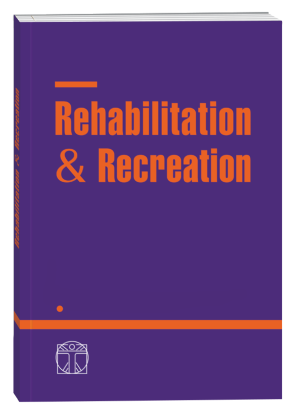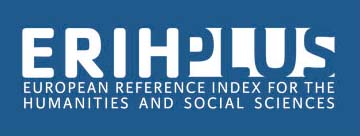PHYSICAL THERAPY AND ERGOTHERAPY IN DISORDER OF THE ROTATOR CUFF OF THE SHOULDER
DOI:
https://doi.org/10.32782/2522-1795.2024.18.4.5Keywords:
ergotherapy, physical therapy, therapeutic exercises, hydrokinesiotherapy, shoulder rotator cuffAbstract
The purpose of the study was to determine the effectiveness of physical therapy and ergotherapy methods for shoulder rotator cuff. Material. Research methods: analysis of scientific and methodical literature; medical observations; goniometry; dynamometry; CMS scale (Constant-Murley Score); collection of anamnesis of life and illness; study of medical records; review. The assessment of motor capabilities of the upper extremity was determined by means of goniometry. The CMS scale was used in the study as a reliable method of assessing the condition of patients with disorders of the structure and function of the shoulder joints. The experimental study was conducted on the basis of the Volyn Regional Clinical Hospital with the participation of 46 people with a violation of the rotator cuff of the shoulder with intact tissue integrity, who were divided into the main and control groups of 23 people each. The results. The main tasks were to improve the functional capabilities and speed of the motor reaction of the injured limb, vestibular functions, adaptation to the environment and satisfaction of household needs and self-care of patients. The author's program of physical therapy and ergotherapy for persons with a violation of the rotator cuff of the shoulder was tested in gentle and restorative movement modes. Therapeutic exercises from light starting positions using relaxation exercises and isometric muscle tension were used in a gentle movement mode. The mobility of the injured limb in the shoulder joint after the experiment improved in both groups in terms of flexion, extension, abduction and rotation of the shoulder with a significant advantage in the main group. The level of functional capacity according to the CMS scale according to the criteria of pain, household activities, range of motion and muscle strength was also higher in the main group of patients. Conclusions. The selection of optimal angles and initial positions for engaging the rotator cuff of the shoulder and subspinatus muscle were useful in developing a rehabilitation program and increasing the physical activity of patients with disorders of these muscles. Individually selected therapeutic exercises, hydrokinesitherapy, physiotherapy and therapeutic massage contributed to the restoration of normal mobility in the shoulder joint, ergotherapy ensured the adaptation of patients to household and professional loads.
References
1. Андрійчук О., Грейда Н., Масікова Т. Оцінка болю та якості життя в практичній діяльності фізичного терапевта. Фізичне виховання, спорт і культура здоров’я у сучасному суспільстві. 2019. № 2(46). С. 55–60. DOI:10. 29038/2220-7481-2019-02-55-60.
2. Андрійчук О.Я., Вавдіюк Г.М., Коритко З.І., Майструк М.І. Гайдук О.А. Методи діагностики при порушенні ротаторної манжети плеча. Health & Education. 2023. Вип. 4. С. 187–192. DOI: 10.32782/health-2023.4.26.
3. Афанасьєв С.М. Теоретико-методичні основи фізичної реабілітації осіб із функціональними порушеннями і дегенеративно-дистрофічними захворюваннями опорно-рухового апарату. Київ, 2018. 505 с.
4. Бернаццані М., МакМартін Т., Гарбіс Н. Відновлення пошкоджень PASTA без порушення ротаторної манжети. Arthroscopy Techniques. 2020. № 9(7). С. 883–887. DOI: 10.1016/j.eats.2020.03.003.
5. Вавдіюк Г., Струбіцька Н., Андрійчук О., Руденко А. Вплив порушення ротаторної манжети плеча на поставу людини. Physical culture and sport: scientific perspective. 2024. № 2(1). С. 23–27. DOI: 10.31891/pcs.2024.1.45.
6. Грейда Н.Б., Андрійчук О.Я., Ульяницька Н.Я., Сітовський А.М., Лавринюк В.Є. Реабілітація пацієнтів із травматичними ушкодженнями шийного відділу хребта середнього ступеня. Rehabilitation and Recreation. 2023. № 14. С. 19–26. DOI: 10.32782/2522-1795.2023.14.2.
7. Aranha L., Eapen C., Patel V.D., Prabhakar A.J., Hariharan K. Muscle fatigue response of rotator cuff muscles in different postures. Arch Orthop Trauma Surg. 2023. №143(6). P. 3191–3199. DOI: 10.1007/s00402-022-04650-8.
8. Caldwell P.E., Dustin M.D., Dyer D.O., Pearson S.E. Arthroscopic debridement of the thrower’s shoulder: less is more. Arthroscopy Techniques. 2016. Vol.5. № 6. Р. 1381–1386. DOI: 10.1016/j.eats.2016.08.006
9. Gismervik S.O., Drogset J.O., Granviken F., Ro M., Leivseth G. Physical examination tests of the shoulder: a systematic review and metaanalysis of diagnostic test performance. BMC Mus- culoskelet Disord. 2017. № 18(1). P. 41. DOI: 10.1186/s12891-017-1400-0.
10. Miyakoshi K., Umehara J., Komamura T., Ueda Y., Tamezawa T., Kitamura G., Ichihashi N. Effect of different trunk postures on scapular muscle activities and kinematics during shoulder external rotation. Shoulder Elbow Surg. 2019. № 28(12). Р. 2438–2446. DOI: 10.1016/j.jse.2019.04.059.
11. Osti L., Buda M., Andreotti M., Osti R., Massari L., Maffulli N. Transtendon repair in partial articular supraspinatus tendon tear. British Medical Bulletin. 2017. Vol.123. Issue 1. Р. 19–34. DOI: 10.1093/bmb/ldx023.
12. Sharma G., Bhandary S., Khandige G., Kabra U. MR Imaging of Rotator Cuff Tears: Correlation with Arthroscopy. Clin Diagn Res. 2017. № 11(5). P. 24–27. DOI: 10.7860/JCDR/2017/27714.9911.
Downloads
Published
How to Cite
Issue
Section
License

This work is licensed under a Creative Commons Attribution-NonCommercial-NoDerivatives 4.0 International License.












